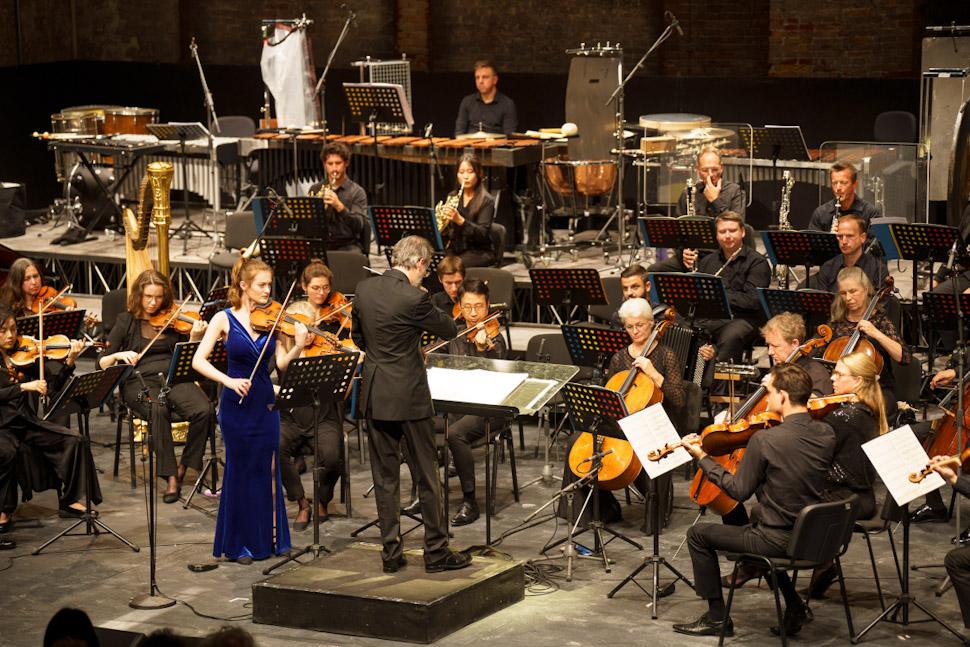| Marco Momi: | Kinderszenen (2024, 32’) for piano, electronics and orchestra, commission La Biennale di Venezia |
|---|---|
| Beat Furrer: | Konzert (2020, 17’) for violin and orchestra - Italian premiere |
| Bernd Alois Zimmermann: | Sinfonie in einem Satz (1951, Rev. 1953, 15’) for orchestra |
| WDR Sinfonieorchester: | Ilan Volkov, conductor |
| Ircam computer music design: | Serge Lemouton |
| Soloists: | Mariangela Vacatello, piano / Noa Wildschut, violin |
Marco Momi / Beat Furrer / Bernd Alois Zimmermann

MARCO MOMI - KINDERSZENEN
Kinderszenen is a title stolen from Robert Schumann. This blatant theft is not limited to the title alone. Composing “reminiscences of an older per- son for older people” (this is how Schumann describes his collection of piano pieces) is a very particular attitude to writing that perhaps, on closer inspection, goes far beyond Schumann’s masterpiece itself. It is possible that it is an invitation or an exercise of feeling, to be practised again and again in empathic writing. To look at the world through children’s eyes – to remember having been children ourselves, to re-appropriate and revive that unique way of experiencing time – is a gesture of adult re-education towards the sensible.
Marco Momi
BEAT FURRER - KONZERT
At first the orchestra was conceived as a resonance chamber for the solo instrument, now it is its speaking counterpart. The solo instrument’s space gradually moves from singing to speaking and from speaking to singing, from speech-like creatural sounds to stylised cantabile melodies, so that the orchestra might be described now as a resonance chamber for the solo violin and now as its speaking counterpart.
The question of what a melody is, of how it relates to a harmonic conception, like many others, must always be formulated anew.
Beat Furrer
BERND ALOIS ZIMMERMANN - SINFONIE IN EINEM SATZ
Bernd Alois Zimmermann’s Sinfonie in einem Satz oscillates, in the composer’s own words, “in broad arcs, between apocalyptic threat and mystical shipwreck”. This work manifests the essential character of Zimmermann’s music: the search for a single musical principle able to unify the entire structure. The twelvetone series on which the Sinfonie is based retains a thematic function, although Zimmermann later relaxed the thematic rigour of the series in favour of a less stringent selection of the musical material in the quest for a freer and more marked serial gesturality. The expressive intensity of the Sinfonie in einem Satz remains a characteristic feature of his style that runs through his entire oeuvre.